Art Homework: Year 7

This book belongs to:
—————————————— ——————————————
About this booklet
This booklet is your art homework for this year. Treasure it, look after it, but above all else don’t lose it!! There’s lots interesting activities and information to keep you occupied in here. It will teach you some basic skills, help you to be creative, enlighten you about art history and, hopefully, be fun. All this great entertainment and learning for free! There’s just a few rules to make sure that everything goes well. 1. Keep every homework piece as unfolded / flat as possible as it is an important part of the whole book. 2. Make sure you complete every task. 3. File every completed piece into the correct slot in your timeline book. 4. Be creative, don’t take the easy option, try to do things that no -one else will, stand out from the crowd. 5. Experiment with a variety of materials, if you usually draw in pencil, use a pen, etc. 6. Try to do some art every day. It can be just reading a few facts, researching an interesting image or creating a work of art. 7. Don’t lose any homework and if you do come back for another copy.
Introduction People began creating art a long, long, long, time ago, before Christ was born. It would take too long to look at all the different types of art from all over the world so we won’t even try! Instead this booklet will take you through a journey of some of the most important art movements, styles and artists there have ever been. Hopefully with each turning page you will learn a little bit more about how and why art is created and how each artist and style of art links to the one before and the one after, just like links in a chain. ENJOY THE JOURNEY!
Year 7 Medieval Gothic (1100—1400)
Renaissance (1400—1600)
Baroque (1590 –1700s)
Rococo (1700—1800)
Romanticism (1800— 1850)
Pre Raphaelites (1848—1854)
Art & Craft Movement (1890—1930)
Symbolism (1880—1910)
Realism (1848—1900)
Impressionism (1870—1900)
Post Impressionism (1880—1920)
Medieval Gothic 1100 C THI O G AL IEV TECTS D E M HI les ARC e Chel d n sey Jea m Ram ton l ia apil d Wil M mas for Tho m Wyn l ia Wil
Gothic comes from the word Goths who were ‘barbarians’ that invaded the Roman Empire between the 3rd and 5th centuries. Mainly an architectural movement, which started in Italy Gothic architecture spread through France, England, Germany and Northern Spain. and can be recognised in the pointed arches of cathedrals. With the introduction of thinner walls, stained glass started to be seen in the cathedrals and churches. Durham Cathedral has Gothic arches and stain glass windows. Notre Dame Cathedral is said to be one of the best examples of Gothic Architecture. Sculptures, illuminated manuscripts and metalwork, were all part of this era and were long lasting, thus can still be seen today. The style’s main theme was religion and many of the smaller sculptures were of the Virgin Mary and Child. Paintings were much rarer but were still on the same theme.
The word manuscript comes from the Latin manu scriptum which translated means ‘written with hands’
Medieval Gothic 1100 - 1400 Task 1: Gothic artists often used ‘Illuminated Letters’ as decoration in manuscripts. Look at the examples below and then design your own illuminated letters using your initials.
Task 2: Gothic architecture was often used for religious buildings such as churches, abbeys and cathedrals. Draw and colour your own design for a stained glass window in a Gothic church.
Medieval Gothic 1100 - 1400 Task 3: Gothic architects often used stone carvings of mythical, fantasy creatures on the outside of the buildings to ward away evil spirits. These were called ’gargoyles’ or ’grotesques’, the difference being that water would spout from the open mouths of the gargoyles (almost like a drain pipe!) whereas the grotesques were just for decoration.
Grotesques at Notre Dame Cathedral
Gargoyles at Notre Dame Cathedral
Design your own gargoyle/grotesque character and write a description of it.
Make the first letter of your description ‘illuminated’.
_______________________________________________ _______________________________________________ _______________________________________________________________ _______________________________________________________________ _______________________________________________________________ _______________________________________________________________
Renaissance 1400 - 1600
S IST T R A CE N A o elic ISS g A n N A lo RE Fra nge a l e h lli Mic i tice t o B Vinc a d o nard ael Leo h Rap n a Titi k Eyc Van
The word “Renaissance� means rebirth. The artists wanted to create realistic paintings and sculptures like the ancient Greeks and Romans did. So the Renaissance artists continued to paint in the realistic style until 1600s. The Renaissance began in Italy and soon spread to England, Germany, France, Poland, Spain and the Netherlands. They created a lot of portraits and religious paintings. Their work was more realistic than the Romans and ancient Greeks and to do this they used perspective and learned how the human body moved by studying it and how its muscles worked, to make their paintings much more accurate.
People studied the books from ancient Greece and Rome and used the information to make scientific discoveries. Leonardo Da Vinci sketched many ideas such as the first flying machine, many, many years before man first flew.
Leonardo Da Vinci (1452—1519) Leonardo lived and worked during the Renaissance. Da Vinci was not his last name, it meant Leonardo from Vinci (Italy). As well as being a master painter he was a scientist, researcher, inventor, engineer and musician. As a teenager he became an apprentice to Andrea del Verrocchio, who was a well known painter, goldsmith and sculptor, with a large studio and many apprentices. At 20 years old Leonardo became as good an artist as his teacher and decided to open his own studio and take on his own apprentices. In 1482 he moved to Milan and worked for the ruling family: Sforzas. Leonardo’s famous work The Last Supper (1496 to 1498) was painted at this time in the rectory of the Dominican Convent of Santa Maria Delle Grazie. However he was experimenting with a new fresco (painting on wet plaster) technique and the painting deteriorated quickly. Before it was finished Leonardo had problems with flaking paint and had to repair it. Over time it has been vandalised, bombed and restored to the point that very little of the original painting remains. He returned to Florence (near Vinci) for 8 years and then back to Milan where the King of France let him paint whatever he wanted to. Leonardo had ambitions to paint for the Pope so moved to Rome in 1513, but there were already many great artists working for him including Michelangelo. The King of France bought him a small castle in which he lived until he died. Anything he painted he studied in great detail to make his paintings as realistic as possible. Leonardo was also a great inventor who designed many things including aircraft and the first armoured tank. Task 1: Research the inventions of Leonardo Da Vinci • Produce at least one sheet showing images and explaining in your own words, some of his inventions that interest you. • Add a title “Leonardo Da Vinci Inventions” • Put the websites on the bottom of your sheet from where you found the • information. • Put your name and form in a footer on your work • Make sure you save your work and print it off. • This can then be added to your timeline booklet.
The ‘Mona Lisa’ Code Find the secret words hidden in the painting... A - 1 B - 2 C - 3 D - 4 E - 5 F - 6 G - 7 H - 8 I - 9 J - 10 K - 11 L - 12 M - 13 N - 14 O - 15 P - 16 Q - 17 R - 18 S - 19 T - 20 U - 21 V - 22 W - 23 X - 24 Y - 25 Z - 26
1. _ _ _ 2. _ _ _ 3. _ _ _ 4. _ _ _ 5. _ _ 6. _ _ 7. _ _ _ 8. _ _ _ 9. _ _ _ _ 10. _ _ _ 11. _ _ _ 12. _ _ _ _ 13. _ _ _ _ _ 14. _ _ _ _ 15. _ _ _ _ 16. _ _ _ _ _ 17. _ _ _ 18. _ _ _ _ _ 19. _ _ _ _ _ 20. _ _ _ _ _ _
Baroque 1600 –1700s The word “Baroque” means uneven pearl This period began in Rome when both the Catholic church and the protestants where trying to spread their beliefs. The Catholic church decided to promote their faith with art as the majority of people could not read.
A RT I ST S
The church wanted biblical scenes painted just like the Renaissance artists had done. The artists used real people to model for their paintings. The Baroque artists often painted pictures with very dark backgrounds and bright scenes or objects They experimented with colour, detail and depth in their work. The style was very elaborate and used in many buildings including the very expensive Palace of Versailles built by Louis XIV of France.
The Baroque style was associated with wealth and power.
Extra note: Sir Isaac Newton and Galileo were around at this time and worked within science, maths, movement and inventions.
Baroque 1600 –1700s Task 1: Many painters from the Baroque era used bible stories as their inspiration. Look at the following images and match them up to their title/artist and story:
Painting ______
A. The betrayal of Christ by Caravaggio Which tells of Judas kissing Jesus so that the guards knew who to arrest. B. The Return of the Prodigal Son by Rembrandt Which tells of a man who returns home to his father and asks for forgiveness after he has wasted all of his money.
Moses Smashes the Stone Tablet by Rembrandt C. Which tells of Moses becoming angry and smashing the stone tablets when he came down from the mountain . Christ on the Cross Between Two Thieves by Rubens D. Which tells of Christ being hung on the cross between two thieves. One says he’s sorry and goes to heaven the other doesn't believe in Jesus and goes to hell.
Baroque 1600 –1700s Task 2: Choose a bible story which you know well and retell it briefly in 6 main bullet points:
__________________________________________________________________
_______________________________________________
Task 3: Draw your own image which shows one of the bullet points from your chosen story in task 2.
Romanticism 1800 -1850 S IS T T R A ner TIC Tur AN d i M Dav RO ner per Tur e. Cas W JM Blak liam table l i W ns ya n Co Joh isco Go ix nc acro Fra Del e n e Eug
The Romantic artists were working at the time of the industrial revolution. These artists were trying to get away from the poverty and pain of the machines taking over their jobs. It was a time of peace after many years of wars, when many new ideas and hopes where being born. They focused on emotions, imagination, creativity, life and human nature. The Romantics believed in the freedom of the individual and they lived life to the full. Their paintings tried to show a more pleasant, natural view of life. The Romantic artists of different countries had different ideas e.g. some of the German artists saw painting as a way to worship God. Whereas the French saw nature as a substitute for God. In England, J.M.W. Turner was known as the artist who painted light and showed dramatic movement in his Paintings. John Constable wanted to make landscape paintings as important as history paintings and for people to feel the splendour of nature. He paid a lot of attention to the clouds.
Extra note: Others that were around at this time included: Mozart, Beethoven and the BrontÊs’. Political figures included: Nelson, Napoleon, Wellington and Washington.
Romanticism 1800 -1850 Task 1: The Romantic painters used pictures to help people imagine they were out of the towns and cities and were in more pleasant surroundings like the countryside or seaside. It also helped them forget about the horrors of the war and feel more at peace. Writers use ADJECTIVES to do a similar job, as these are describing words which put clear images in the readers head and help them imagine they are somewhere else. Now complete the boxes below with appropriate adjectives. Write down 10 adjectives to describe the sea in this picture.
Die Mole Von Calais— JMW Turner, 1804
Write down 10 adjectives to describe this countryside scene.
Salisbury Cathedral From The Meadows— John Constable, 1831
Write down 10 adjectives which describe the sky in this picture.
Woman Before The Setting Sun— Caspar David Friedrich, 1820
Romanticism 1800 -1850 Task 2: William Blake was a romantic poet as well as a romantic painter. Here is part of one of his poems. Read it aloud then draw and colour the image which he puts into your head.
I Wandered Lonely As A Cloud I wandered lonely as a cloud That floats on high o’er vales and hills, When all at once I saw a crowd, A host of golden daffodils; Beside the lake, beneath the trees, Fluttering and dancing in the breeze.
RoS IST T R A au OCO atte ROC ine W cher o Ant ois Bou u a nc Pine ale Fra s a l nd o Nic Chippe h t gar mas Tho iam Ho l Wil
coco 1700— The term Rococo comes form the French word rocaille, meaning the rockery and shell work. This style was mainly seen in architecture and furniture and then in silver, glass, ceramics and all decorative arts. It was a bit more light hearted and fun and showed lots of scrolls and curves. The wealthy in Paris took the Rococo style and made their gardens look like natural grottos and dells. Many paintings show very calm, natural and relaxed poses of couples surrounded by angelic, cherubs. The artists took the figures into a fantasy world of the models imaginations. There was a lightness depicted by the use of delicate pastel colours in the work which was very atmospheric and light hearted.
Rococo 1700—1800 The Palace of Versailles has many examples of the Rococo style both inside and out.
Task 1: See how many words, with three or more letters, you can create using the words PALACE OF VERSAILLES.
Task 2: Look at the examples and then design your own Rococo style mirror frame.
Pre S IS T T R A TE ti ELI sset A o H R P e A l R riel PRE s Gab illai e t n M n Hunt h Dan o J ma t ti Hol osse m R a l i l hae Wil son Mic m a ens ollin i l C l i s eph W e t m S Ja rge ner Geo ol c i Wo dr Fre homas T
Raphaelites 1848 – This movement was small and was made up of 7 British artists. It was called the Pre Raphaelite Brotherhood (PRB). They did not like the art of their time and wanted to influence a change in it. They wished to return to the style of the Flemish and Italian artists which showed great detail, colours and complicated compositions. The PRB used real life models to pose for their paintings and were inspired by great writers such as Shakespeare, Tennyson and Keats. The colours came from dyes that had up until then been used in the cloth industry. Many of their paintings had stories behind them, sometimes very sad ones. Many of the paintings had symbolic meanings in them, hidden in the little details in the backgrounds and surroundings of the main figures. The movement only lasted five years, however it greatly influenced the artists and movements that followed, such as William Morris.
Extra note: Black and white photography was around at this time and had an impact on the detail in Hunt’s work
Pre Raphaelites 1848 –1854 ‘Ophelia’
painted by John Everett Millais in 1851.
To create this painting of ‘Ophelia’ Millais used various shades of brown, purple and green. If you want to copy this painting you will need to work out the percentage of the primary colours you need for each shade. Example: 10% yellow + 30% blue + ______% red = Brown 10% + 30% = 40% 100% - 40% = 60% Therefore the answer is 60% red. Now work out these percentages yourself. A. ______% red + 74% blue = Purple B. 56% red + ______% blue = Purple C. 15% red + ______% blue = Purple D. 49% yellow + ______% blue = Green E. 77% yellow + ______% blue = Green F. ______% yellow + 62% blue = Green G. 23% yellow + 35% blue + _____% red = Brown H. ______% yellow + 24% blue + 60% red = Brown I. 62% yellow + ______% blue + 21% red = Brown
Pre Raphaelites 1848 –1854 Task 2: To create the painting the model, Elizabeth Siddal, had to spend many hours laid in the bathtub. Just imagine this is a typical week for Elizabeth: Monday— 9 hours
Friday— 7 hours
Tuesday— 7 hours
Saturday— 10 hours
Wednesday— 8 hours
Sunday—DAY OFF !
Thursday—10 hours How many hours in total was she in the bathtub in this week? ________ hours. If she did this for 12 weeks how many hours in the bath would that total? ________ hours.
Task 3: Even though John Millais put candles underneath the bath tub to keep it warm it was still very cold as he was working on the painting during the winter months. At one point the candles went out and the water was so cold that Elizabeth caught a severe cold and needed medical treatment. Her father demanded that Millais paid the £50 bill but Millais would only pay part of it!
If he paid half of the bill how much would that be?
If he paid one fifth of the bill how much would that be?
If he paid one tenth of the bill how much would that be?
If he paid a quarter of the bill, how much would that be?
If he paid three quarters of the bill, how much would that be? £______
Art & STS RTI A T ris RAF & C m Mor nes T R a A li Jo Wil rneu B ard skin ntosh Edw ohn Ru ki J Mac etti e i n Ren el Ross les i r a abr Ch ti G n a D
Craft Movement 1860 “Have nothing in your houses that you do not know to be useful or believe to be beautiful� William Morris The artists and craftspeople of the movement had ideas that produced art and craftwork that moved away from the mass produced poorly designed and made, factory items, to pieces that were hand made with skill and craftsmanship. The chosen workers had to complete a 9 year apprenticeship before being able to pass on their skills. These craftsmen were heavily linked with the Pre Raphaelites and their ideals. The group wanted art for the people by the people. However it took time for craftsmen to make the individual pieces of furniture to enhance the lives of ordinary people. Because of this, the pieces were very expensive and so only the wealthy could afford them. Thus they failed to live up to their expectations of all people enjoying making and owning well made and beautiful pieces of art and craft. Nature was their main inspiration and used in wallpaper, tapestry designs, furniture and stained glass. They also tried to be true to the materials they worked with.
The Red House was designed for Morris by Philip Webb in the style of the Art & Craft Movement.
The group also looked back to the Gothic and their religious influenced work. Morris set up the Kelmscott Press which published 53 high quality hand bound books.
Art & Craft Movement 1860 –1910 Task 1: A lot of the work of William Morris is based around the concept of repeating patterns. His designs are very intricate but we can produce simpler patterns by using the idea of ‘Tessellation’ . Tessellation means a repeating pattern or arrangement of 2d shapes that can fill a page with out gaps or overlapping edges. Tessellating patterns can use a single shape or a range of shapes. Look at these shapes and colour in the ones which you think would tessellate to fill a page. If you’re not sure then trace them, cut them out and try it!
Task 2: Sally wants to decorate a wall in her living room with some beautiful William Morris wallpaper but she is having difficulty working out the cost and how many rolls to buy, can you help? The wall is 6 metres wide and 3 metres high. There are 9 metres of paper on a roll and the rolls are half a metre wide. How many rolls does she need? __________ The price of the paper is £25 per roll so how much will the paper cost altogether? __________ Now she needs to add in some extra costs of: £3 for wallpaper paste £5 for a new paste brush £2 for a new bucket How much does she spend altogether? __________
Art & Craft Movement 1860 –1910 TASK 3: Now it’s over to you to create your own wallpaper design. It needs to be a repeating pattern based on William Morris so maybe think about using flowers, leaves, fruit or other natural objects.
Examples of William Morris Wallpaper.
Fruit design by William Morris
Cray design By William Morris
Sym- bolism 1880 - 1910 STS RTI A IST ch BOL d Mun L Y r S n a Edv n Redo s o l ne Odi han C e sd eau Puvi av Mor ones t J Gus rneu B or ard Ens s Edw e Jam
Symbolism is an art movement that started in France and Belgium, gradually spreading throughout Europe. There were strong connections with the Pre-Raphaelites and the Romanticism movements. Their paintings moved away from lifelike paintings and focused on images from their imagination, dreams
and unconscious mind. Because of the short timescale of the movement, many of the artists styles crossed over into other art movements as well as Symbolism. The artists were inspired by the writers and poets of that time as well as history, myths and legends and Bible stories. Some also used alcohol and drugs to stimulate their imaginations. Main themes for paintings included: love, death, sin, disease and religious feelings. They moved away from paintings that could tell a story, towards depicting a mood or feeling.
Symbolism 1880 - 1910 Task 1: Artists from the symbolism movement used dreams and imagination as inspiration for their work. Think of a dream you have had recently and jot down some words and phrases which describe it. Here are some questions to help: Who or what was in the dream? Where did the dream take place ? What happened in the dream? How did it make you feel? Were you in the dream?
Notes: Notes-
Don’t worry if your ideas seem weird or strange. It’s just your imagination running wild!
Task 2: Now use your notes to create a descriptive piece of writing to explain your dream. Remember to use lots of ADJECTIVES as they will help the reader to really picture what is in your mind. _______________________________________________________________________ _______________________________________________________________________ _______________________________________________________________________ _______________________________________________________________________ _______________________________________________________________________ _______________________________________________________________________ _______________________________________________________________________ _______________________________________________________________________ _______________________________________________________________________
Symbolism 1880 - 1910 Task 3: Now draw an image which represents your dream in the Symbolism style. Use colour or shading to show the mood of the dream and think about how the dream made you feel.
Realism 1848 - 1900 S IST T R A lle ST ami I C L e et REA aptist Mill B s o n i Je a ranc urbet F n Jea tave Co net Gus ard Ma l b u Edo elm Lei heur n h Wil alie Bo os ie R r a M
Marie Rosalie Bonheur was a member of the Realist movement but because of her sex she could not attend art school. Instead she was home taught by her father a famous landscape painter.
She was also possibly one of the first feminists as she wore men’s clothes when working with animals as she said it gave her freedom to move.
The Realist movement started in France, with artists wanting to show the world as real as they possibly could, painting everyday objects and poorer people. These things had been deliberately ignored by artists such as the Romantics. The Realism movement was sometimes called “Naturalism”. The paintings produced by these artists did not show any of their personal feelings just day to day real life.
Gustave Courbet is said to be the founder of the Realist movement. He was nicknamed the Father of
Realism 1848 - 1900 Task 1: Carry out some research into the artists Marie Rosalie Bonheur. Here are some starting questions for you to think about: • • • • • • •
When was she born? Where was she born? When did she die? What kind of life did she lead? Was she married? Did she have children? What were her main achievements?
Make a list of three websites/books which you have used for your research: 1. _____________________ 2._____________________ 3. _____________________ Task 2: Imagine a day in the life of Marie Rosalie Bonheur and write a diary entry showing what her typical day might be. REMEMBER THAT DIARY ENTRIES NEED TO BE: A. In the first person (using I). B. Have facts about what happened in the day.
C. In the past tense. D. Show how the writer is feeling.
Dear Diary, _____________________________________________________________________ ______________________________________________________________________ ______________________________________________________________________ ______________________________________________________________________ ______________________________________________________________________ ______________________________________________________________________ ______________________________________________________________________ ______________________________________________________________________ ______________________________________________________________________
Realism 1848 - 1900 Task 3: Now choose another of the artists from the Realism movement and research them FULLY using the questions from the previous page to help. When you have completed your research create a fact sheet about the artist and print it out.
Include some images of the artist and some examples of their work. Have sections with information about: • Their life and family. • Their work and achievements • What was happening in the world at the time they were alive.
Make sure you think carefully about how you present your information and pictures so that it attracts the readers attention but is easy for them to understand.
Gustave Courbet
Wilhelm Leibl
Edouard Manet
Impressionism 1870 –1900 ART T S NI SIO ISTS t S E R ona M IMP e d gas Clau r De o gh a g Ed an G nt V lebotte e c a il Vin et ve C a t s Man d Gu r ua ey Edo Sisl d e r r ro Alf issa P oir e l il Ren e t s Cam ugu re-A r e i P
Impressionism started in Paris, France. The name came from a painting by Monet called “Impression Sunrise” which was painted at the beginning of that era. The Impressionists painted outdoors and also focused on light and how it effected the shadows and colours during the day and the changing seasons. Monet often painted series of paintings of the same place at different times to see how light effected the paintings. His Haystacks series is one of his most famous. Like the Realists, the Impressionists painted everyday figures and scenes. They also focused more on the backgrounds tending to place figures at the side of the composition. They often used their family and friends as the figures in their work. The artists painted in thick oil paint using short brush strokes which gave the impression of a scene. Close up the paintings look blurry. You need to view them from a distance to appreciate the scenes. Van Gogh’s paintings show the brush techniques well.
Impressionism 1870 –1900 Task 1: The objects below are casting shadows which form a triangle. Work out the missing angles in the following remembering that angles in a triangle total 180°.
Chimney Stack
Impressionism 1870 –1900 Task 2: Have a look on the Internet for images of trees at different times of the year. Take note of the colours, shapes and lines that you can see. Now draw and colour four pictures below showing a tree during each of the seasons.
Post RTI TA
Impressionism 1880 – STS
IS ION ne T S an RE IMP aul Cez uin T S P g PO Gau at Paul eur S s e o gh rg Geo t Van G en Vinc
Paul Gauguin painted in a flat
Most of the Post Impressionist artists had been Impressionist artists and then branched out into more individual styles of painting, although colour was still a major influence of their work They did not work as a group but tended to paint alone. Each one took an element from the Impressionist ways of painting and exaggerated it.
style of pure colour with heavy outlines. Many of his paintings were of Tahiti and its women.
Vincent Van Gogh took the bright colours of the Impressionists and exaggerated them even more. He also layered paint even thicker (called impasto) and produced paintings with energetic brush strokes, showing movement.
George Seurat took the colours and separated them into pure colours and produced paintings made up of millions of little dots (called pointillism). These paintings need to be viewed from a distance to clearly see the image.
Paul Cezanne is most famous for his still life and landscape work. He believed that every picture came from either a sphere, a cone, a cylinder or a cube. He used thick brush strokes and strong dark outlines in his work. His ideas inspired Picasso and the Cubists.
Post Impressionism 1880 –1920 The concept of using dots to create an image can be seen many times in Post Impressionist pieces and this was called ‘pointillism’. Task 1: For each shape plot each point on the grid and join them together, using a ruler, to create the shape. Once you have finished you have an image of : _________________________
Shape a: (2,7) (3,9) (4,7) (2,7)
Shape b: (5,4) (7,4) (7,6) (5,6) (5,4)
Shape c: (7,7) (10,7) (10,8) (7,8) (7,7)
Shape d: (2,3) (3,3) (4,2) (8,2) (9,3) (10,3) (8,1) (4,1) (2,3)
Shape e: (1,2) (1,9) (3,11) (9,11) (11,9) (11,2) (9,0) (3,0) (1,2)
Post Impressionism 1880 –1920 Task 2: Still thinking about the grid on the previous page. Write down some points which you could plot to draw a small square at the side of the image.: (___ , ___)
(___ , ___)
Task 3: Use the ‘Pointillism’ style to add the colour into this image
If found please return to:
Name: Address:
- Skip to main content
- Skip to primary sidebar
- About Art Class Curator
- Media & Press
- Programs for Schools
- Member Login
- Search this website
Art Class Curator
Hands-on and Minds-curious Art Learning

Experience Art Book and Card Deck on Kickstarter!
Art printables, worksheets, and powerpoints.
Inside: A collection of printable art worksheets, PowerPoints, and lesson plans to use in art class. (Most of them are FREE!)

Art class should be about more than just making art! Art lessons should introduce students to a variety of works of art and allow them to explore the process, the history, and their own personal connections to the artworks they encounter.
Keeping a class full of students engaged while looking at art takes practice, confidence, inventive activities , and a variety of approaches. But most of us weren’t taught how to talk about art with kids . That’s why I’ve gathered some of my best printable art worksheets and downloads in one place! Most of these art lesson plans can be used for any grade level and there’s enough variety to keep elementary, middle, and high school students interested and intrigued.

Free Printable Art Worksheets
My favorite go-to art lessons come from the Art Appreciation Worksheet Bundle .
It’s as easy as 1, 2, 3! 1. Pick an artwork 2. Print one of the Art Appreciation Worksheets 3. Watch with joy as your students connect with and interpret art
The bundle includes 25 printable art worksheets, but everyone who signs up for Your Weekly Art Break , my email newsletter full of art inspiration, gets six FREE art appreciation worksheets . Fill out the form below to receive your free art worksheets and weekly art inspiration.

Free Worksheets!
Art Appreciation Worksheets
In this free bundle of art worksheets, you receive six ready-to-use art worksheets with looking activities designed to work with almost any work of art.
Below, you’ll find a collection of the Art Class Curator posts that include art printables and downloads. These brains-on art activities will jump-start students’ critical thinking skills and breath new life into their art projects . All of these art lesson plans are all free unless otherwise marked. Most are printable PDFs, but the ones containing PowerPoints are marked.
Free Elements and Principles Printable Pack
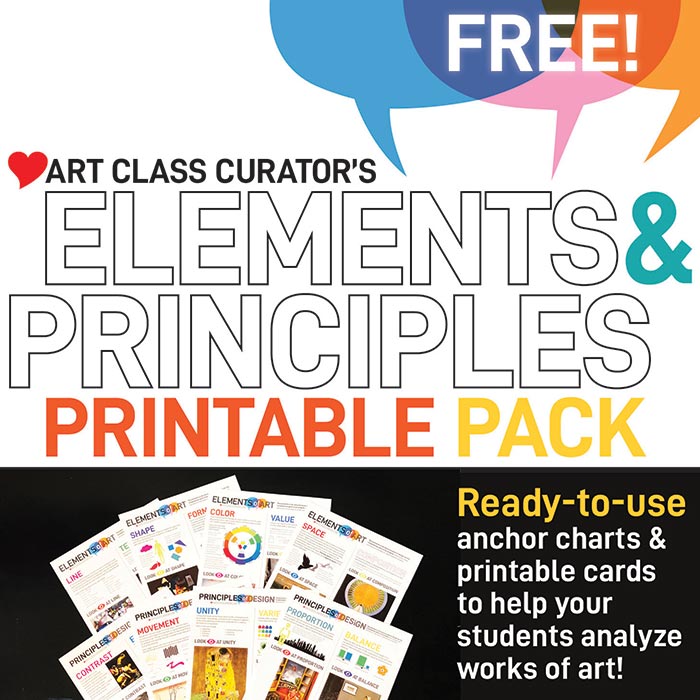
This pack of printables was designed to work in a variety of ways in your classroom when teaching the elements and principles of art. You can print and hang in your classroom as posters/anchor charts or you can cut each element and principle of art in its own individual card to use as a lesson manipulative. Click here to download the Elements and Principles Printable Pack.
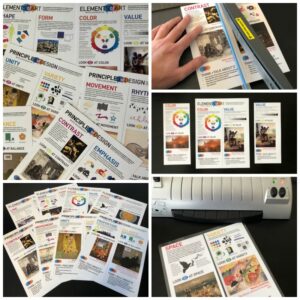
Free Resource!
Elements & Principles Printable Pack
The Elements & Principles of Art are the foundation of every artwork, but teaching them can be a bore. Wake your students up and engage them with full color artworks, easy to understand definitions, and thought-provoking higher level thinking questions. This versatile resource can be hung in the classroom or used as an art manipulative.
Art Appreciation Printables
- Free Art Appreciation Printable Worksheet Bundle
- Art Appreciation Worksheet Bundle 25-Pack
- I am… Dorothea Lange: Exploring Empathy
- Character Analysis Art Activity: Twitter Perspectives
- Haikus about Art
- I See, I Think, I Wonder
- “I Feel” Word Wheel: Learning Emotional Literacy in Art Education
Art Appreciation Activities & Art Appreciation Lessons
- Art Description and Drawing Activity
- Virtual Art Museum Field Trip
- Complete the Picture: An Easy Art Appreciation Game for Kids
- Interpreting the Power of the Kongo Nkisi N’Kondi
Artworks Printables
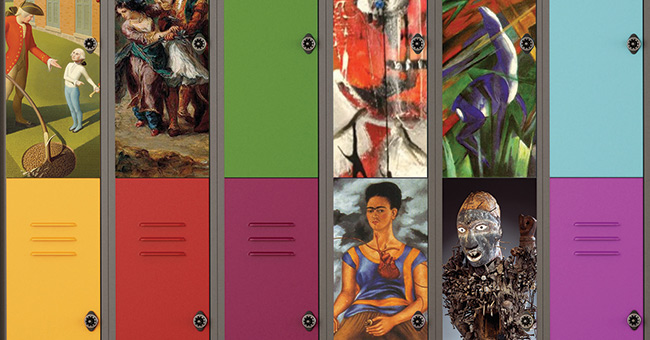
Artworks Worksheets & Artworks Activities
- Art, Horror, and The Sublime: Symbolism in Pablo Picasso’s Guernica
- Kollwitz & Cassatt: Two Views of Motherhood in Art
- Rosa Rolanda Jigsaw Art Learning Activity
Artworks Lessons
- Elements of Art Examples & Definitions
- Principles of Design Examples & Definitions
- Frida Kahlo’s The Two Fridas Art Discussion Lesson
- Art Analysis Activity for John Gast’s American Progress
- Art Around the World in 30 Days – China
- Masterpiece Monday: Manifest Destiny Art
Art Criticism Printables
Art criticism worksheets.
- SPARK: 5 Art Criticism Steps for Inspired Art Connections and Conversations
- Art History Student Study Guide Worksheets
Art Criticism Activities
- 82 Questions to Ask About Art
- Photograph Analysis Learning Activities
Art Criticism Lessons
- 4 Steps of Art Criticism Lesson
- What is Art? – Aesthetics Lesson Bundle
- Classical Sculpture Analysis Lesson
- Decoding Style: How to Teach Students to Read an Artwork
Puzzles About Art Printables
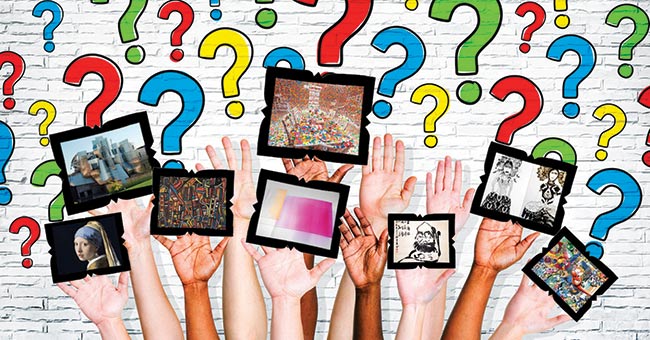
Teaching students about art and aesthetics is a great way to make them think about art in a new way. Aesthetics puzzles ignite exciting, meaningful classroom art discussions and flex students’ philosophical and critical thinking skills.
- Puzzles About Art: The Chimpanzee Painter
- Puzzles About Art: Call it Driftwood
More Art Printables
You can find more art lesson plans in the Art Class Curator store and on Teachers Pay Teachers . Sign up for Your Weekly Art Break to get six free art art worksheets and weekly art inspiration delivered to your inbox!
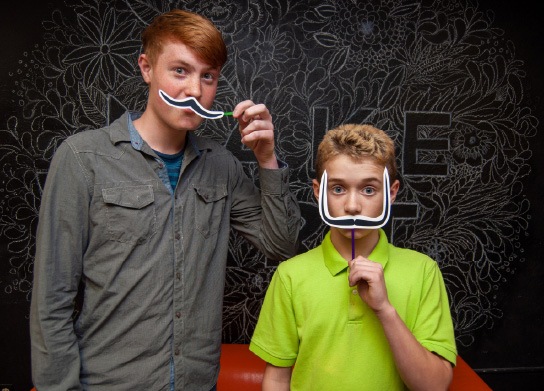
Get Art Inspiration To Your Inbox!
*free bundle of art appreciation worksheets*.
02392 823766

- Admissions & Transition
- Careers advice service
- Apprenticeships
- Contacts and Useful Links
- Democracy & Equality
- Disadvantaged Students
- Our Facilities
- Osted/Inspection Reports & Examination Results
- KS3 Homework Photos
- Making PPE For The NHS
- Art Design & Tech Portfolio
- School Prom 2018
- School Prom 2019
- School Prom 2021
- School Prom 2022
- School Prom 2023
- School Trip Gallery
- Year 7 Carol Service 2021
- Video Gallery
- Reading; A Culture of Learning at St. Edmund's
- Safeguarding
- General Information
- Governors Profiles
- Foundation Governors
- School Policies
- Summer Schools
- Teaching & Learning
- Testimonials
- In Memoriam
- Vacancies General Information
- Teaching Vacancies
- Support Staff Vacancies
- Work Experience
- Who's Who? / All Staff Lists
- News & Newsletters
- Introduction
- Activities & Spiritual Badges
- Chaplaincy Events
- Parent Prayer
- Catholic Social Teaching
- Our Wider Catholic Family
- Religious Education Outcomes
- Anti-Bullying /Sexual Harassment & Online Safety Resources
- Trinity Suite - Emotional Wellbeing Centre
- Virtual Open Day
- Engineering
- Food Technology
- Photography
- Art, Design & Tech Portfolio
- Child Development
- Citizenship
- Computer Science and Creative I-Media
- Film Studies
- Learning Library Resource Centre
- Modern Foreign Languages
- School Choir
- Physical Education
- Religious Education
- Special Educational Needs
- Homework Calendar
- KS3 Homework Booklets
- KS3 Homework Overview
- KS3 Homework Timetables
- KS4 Homework Overview
- KS4 Homework Tasks
- Year 7 Home Learning Tasks
- Year 8 Home Learning Tasks
- Year 9 Home Learning Tasks
- Year 10 Home Learning Tasks
- Year 11 Home Learning Tasks
- BBC News School Report
- Breakfast & Lunch Menus
- Careers / Post 16 Resources
- Duke Of Edinburgh Award Scheme
- EduLink-One Student Engagement App
- Email, Office, OneDrive & Teams
- General Exam Information
- Year 10 Exam Information
- Year 11 Exam Information
- Results, Guidance & Further Education
- Year 11 Revision Tips & Timetable
- FAQ's for New Pupils
- Free eBook Lending Scheme
- LLRC Lending Portal
- My Stickers & Rewards
- Options 2024
- Pupil Wellbeing
- School Clubs
- School Trips
- Student Prefects
- Weather Report
- Absence From School
- Bursary for Students
- Calendar, Term Dates, Detention Times & The School Day
- EduLink-One Parental Engagement App
- Household Support Fund
- Friends of St Edmund's (Parent Teacher Association)
- Key Contacts
- Letters To Parents
- Parents Evening
- Parent Pay Cashless Catering
- Safer Internet
- KS3 School Uniform
- KS4 School Uniform
- School Uniform Shop Opening Hours
- School Uniform Policy
- School Uniform Price List
- Sports Education Kit
- Year 7 CAT4 Tests
- National Tutor Programme
- Parents Evening Teacher Login
- PCC Payroll
- Report Staff Absence
- Staff Remote Gateway
- Staff Room Booking System
- Technical Help

I can do all things with the help of God who strengthens me Philippians (4:13)
'I can do all things with the help of God who strengthens me.' Philippians (4:13)

Selection of Homework
Latest homework calendar events, ks3 autumn term homework booklets 2023-2024, ks3 spring term homework booklets 2023-2024, ks3 summer term homework booklets 2023-2024.

Arundel Street, Portsmouth, Hampshire PO1 1RX

Our use of cookies
We use necessary cookies to make our site work. We'd also like to set optional analytics cookies to help us improve it. We won't set optional cookies unless you enable them. Using this tool will set a cookie on your device to remember your preferences.
For more detailed information about the cookies we use, see our Cookies page Cookie Control Link Icon
Necessary cookies
Necessary cookies enable core functionality such as security, network management, and accessibility. You may disable these by changing your browser settings, but this may affect how the website functions.
Analytics cookies
We'd like to set Google Analytics cookies to help us to improve our website by collecting and reporting information on how you use it. The cookies collect information in a way that does not directly identify anyone. For more information on how these cookies work, please see our 'Cookies page'.
We use cookies to provide you with the best experience on our website. Read our Privacy Policy to find out more. Policy page Cookie Control Link Icon
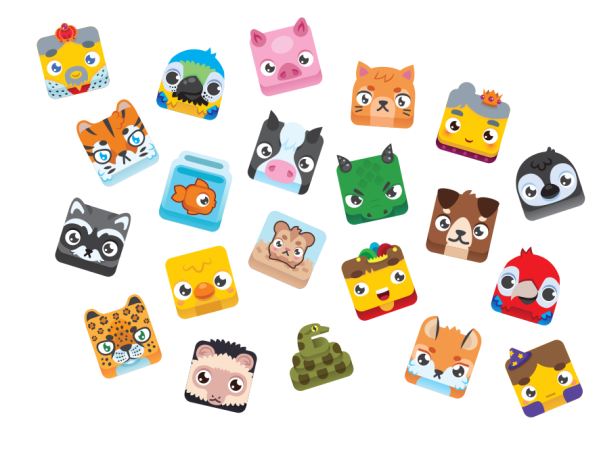
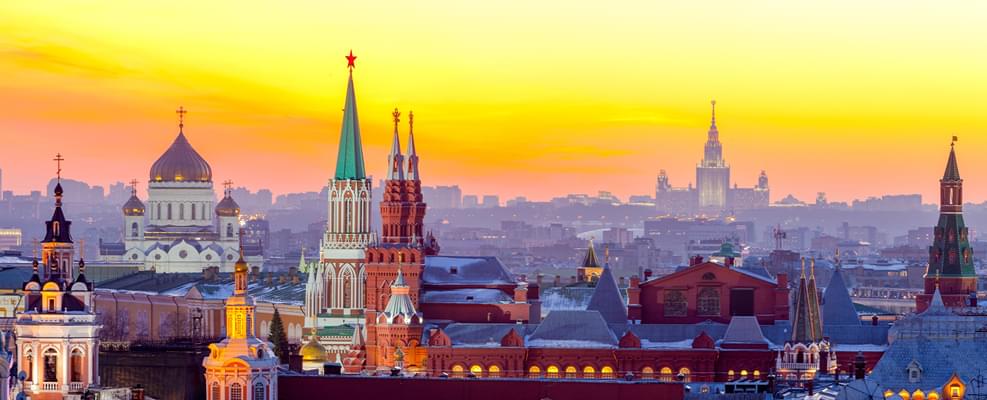
Moscow Attraction Tickets
Why to visit moscow.
Moscow is the capital of Russia and a majestic city that will surprise, seduce and shock you at every turn. It is renowned for its fairly-tale structures, stunning architectural splendors, and enormous expanses of wilderness. It has homegrown museums where you can retrace Russia's magnificent literary heritage. Moscow is also home to the best cultural institutions in the world that celebrate Russia's fine arts. The city is renowned for its performing arts, and you can watch a ballet, opera, or circus performance at one of Moscow's theaters. You can see sculptures of celebrities everywhere along the streets, showing a sense of pride in the Russians.The city is soaked in history, and walking around the streets is like teleporting from one century to the next. Don't forget to visit scenic parks like Sokolniki, Gorky, and Kolomenskoe that turn into popular festival spots in the summer and ice skating rinks in the winter. The city features an impressive variety of clubs, shopping avenues, and bars and has many vibrant boulevards and districts where you can feel the pulsating energy of the city. So buy the Moscow attractions tickets now to soak into the magnificent heritage and culture of the city.
Top Moscow Attractions Tickets
Purchase the Moscow City Pass and get access to some of the most iconic attractions like the Bolshoi Theatre, All-Russian Exhibition Center, Red Square, Moscow Zoo, and Kremlin. These attractions are an ode to the city's rich history and culture and reflect all strands of Russia's convoluted past.
You can start your trip by visiting Bolshoi Theatre, a historic theatre where you can enjoy the world-class ballet and opera performances. Appreciate the breathtaking architecture of St. Basil's Cathedral and trace Russia's most defining political and historical events by heading to the Kremlin. Moscow City Pass also gives you access to Moscow Zoo, one of the oldest zoos in the world with more than eight thousand animals and birds. Watch the army parades at Red Square and see the specialized exhibitions dedicated to furs, food, jewelry, cats, and dogs at the All-Russian Exhibition Center.
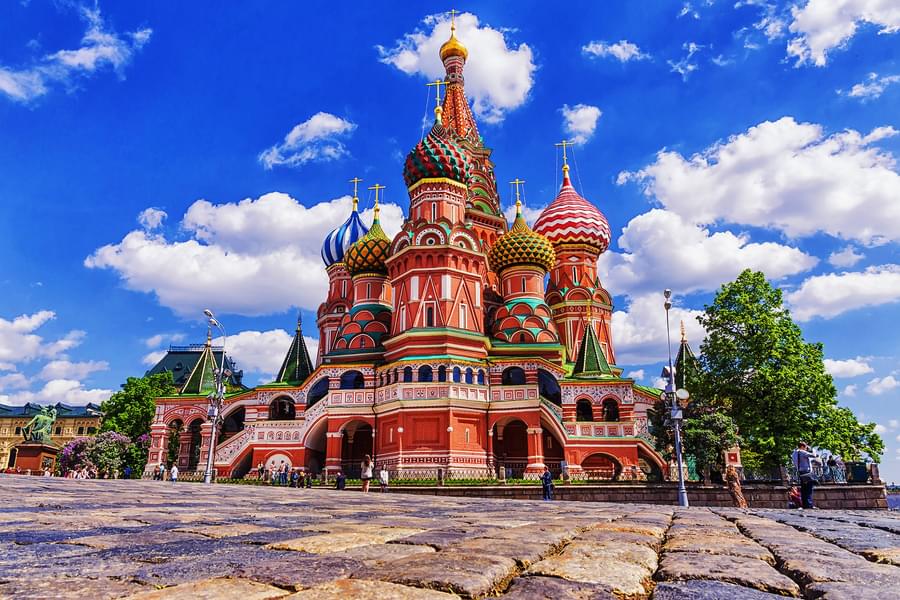
Moscow Museum tickets
With the Moscow Pass, you can visit some of the most iconic museums, like the Central House Museum of Aviation and Space, State Historical Museum, and Museum of Cosmonautics, at discounted rates. These museums will remind you of Russia's glorious past and rich heritage.
You can visit the Museum of Cosmonautics to learn about the nation's achievements in space exploration and head to the Central House Museum of Aviation and Space to see more than thirty-six thousand space-related exhibits. Learn about the life of Mikhail Bulgakov at Museum Theatre "Bulgakov House" and see relics of prehistoric tribes at the State Historical Museum. You can also visit Lenin's Mausoleum at Red Square, a mausoleum that serves as the final resting place of Vladimir Lenin. Moscow Pass also gives you access to Pushkin State Museum of Fine Arts, the largest museum of European art known for its world-class exhibitions. You can also visit Moscow State Integrated Museum-Reserve, Russia's largest museum-reserve with two historical and cultural territories.
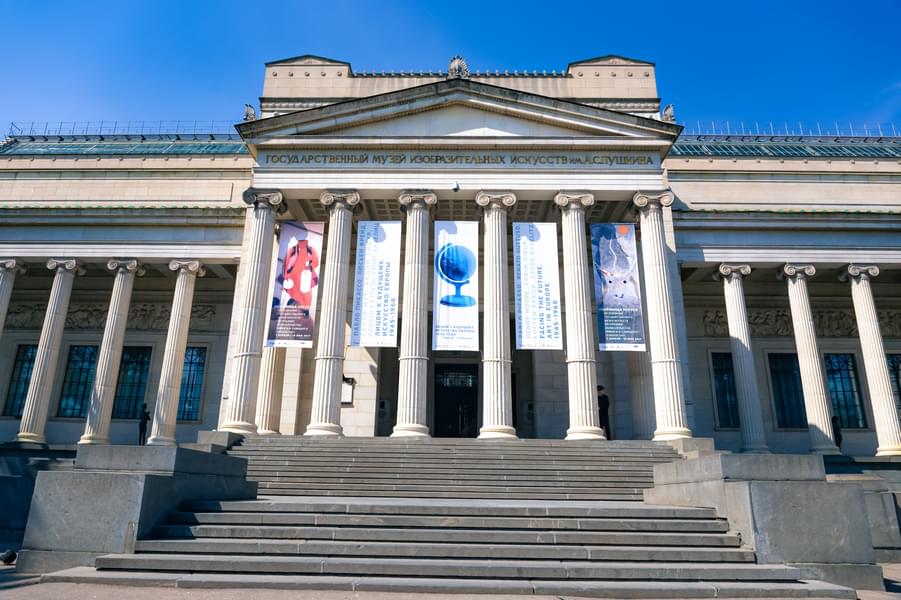
Moscow Day Trips
Reveal the hidden treasures of Moscow and get acquainted with the city's highlights by opting for day trips. Some of the day trip options include Moscow Walking Tour, a one-day tour, and hop on hop off tour.
Learn about Moscow's vibrant hipster culture and marvel at the breathtaking attractions by undertaking the Moscow Walking Tour. Walk through the picturesque lanes of St. John's Hill or the terrifying neighborhood of Khitrovka and listen to interesting narrations from your guide. You can also opt for a hop on hop off tour and explore the beautiful city on a double-decker bus. Another interesting option is the one-day tour in Moscow that gives you a chance to explore the historic locations of the city, like St. Basil's Cathedral, Alexander Garden, and Red Square, at your own pace.
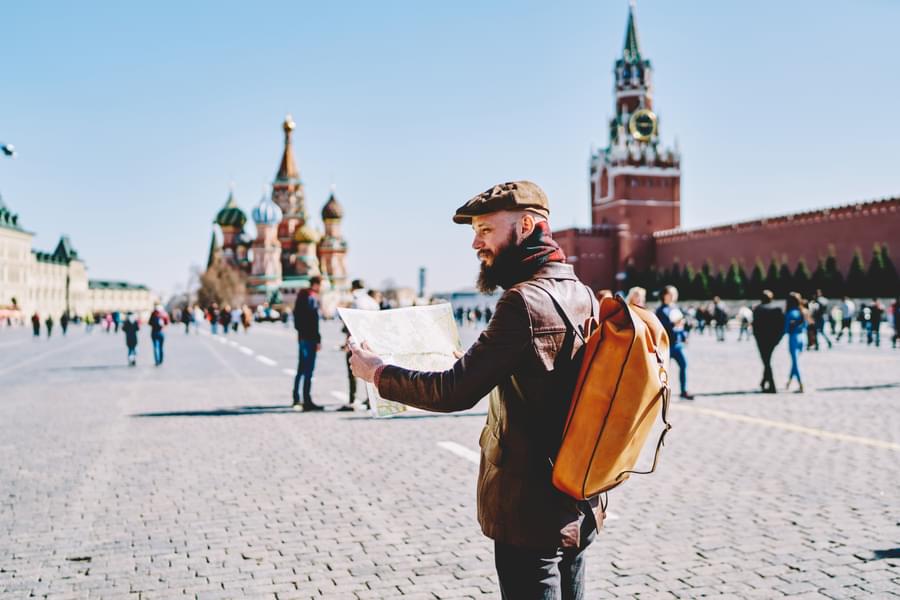
Plan Your Visit to Moscow
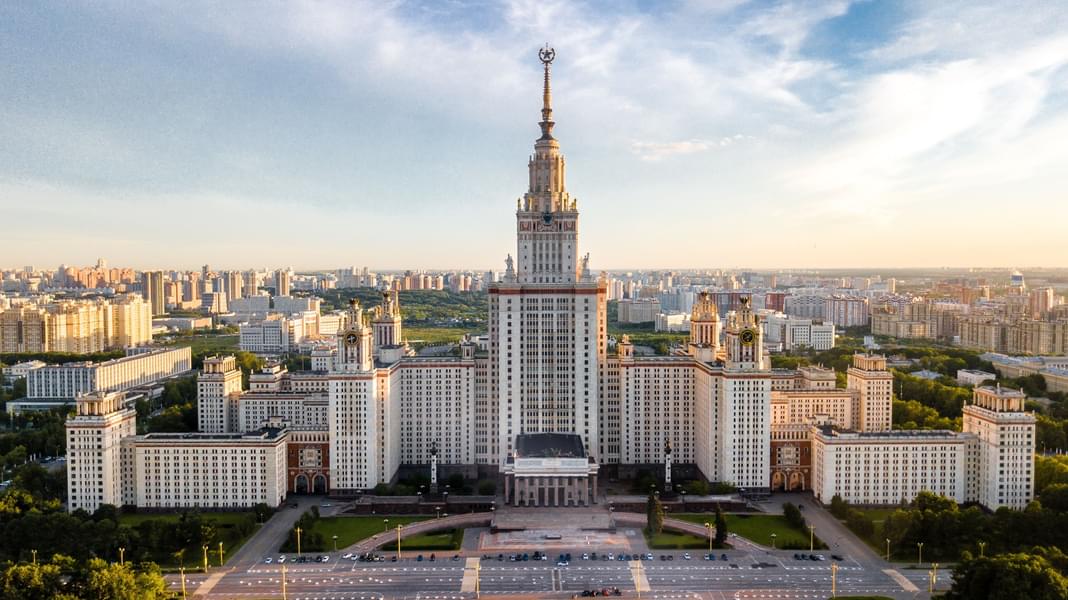
By Air : Moscow Domodedovo Airport is the main airport of the city that serves different destinations around the world. The major carriers include S7 Airlines, Red Wings Airlines, Smartavia, and Ural Airlines.
By Train: The city has nine rail terminals that handle traffic from different parts of Europe and Asia. An electric railway network connects the city with various suburbs and surrounding cities.

May and September is the best time to visit Moscow as, during these months, the temperature starts soaring, snow starts melting, and flowers start blooming. Due to the pleasant weather, you can also indulge in various outdoor activities during this time of the year.
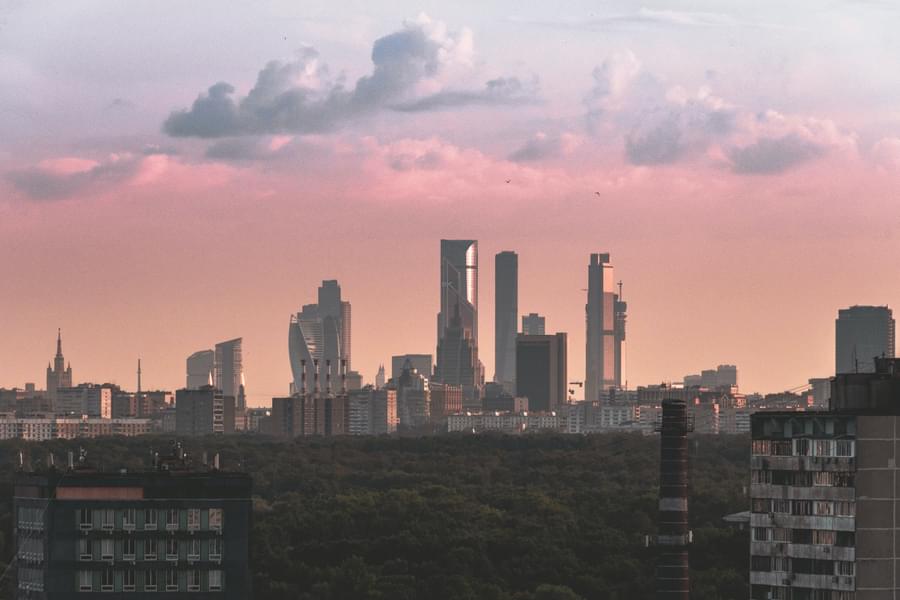
Metro : The Metro system has twelve lines, and more than one hundred and fifty stations are marked with 'M' signs. Metro runs every two to three minutes, so you won't have to wait for a long time to find a train.
Tram : The tram network is divided into three sub-networks, and it covers a total route length of around one hundred and ten mile spread. Trams also connect metro lines and provide a scenic way to tour the city.
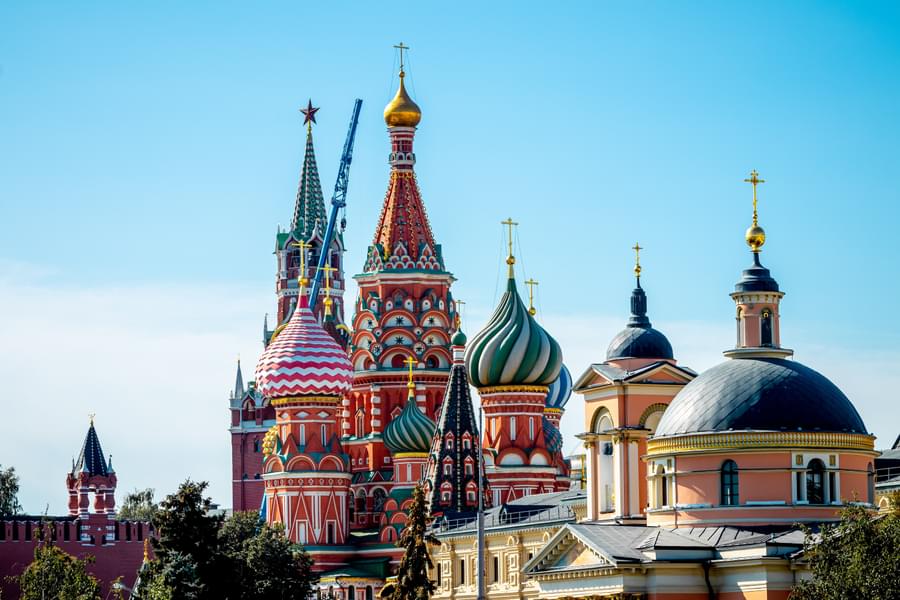
Tverskoy : Tverskoy is renowned for its nightlife and has tons of bars and nightclubs. It offers good connectivity with the city as it has eight metro stations and various bus stops. You can also find budget-friend and premium accommodation options here.
Basmanny : Basmanny is the northwest portion of Moscow dotted with a wide variety of museums and art galleries. It is home to artsy venues and five-star accommodations and hotels.
Arbat : It is a trendy neighborhood with top-notch restaurants, cloth shops, hotels, and cathedrals. Whether you want a cheap or a five-star stay, this area will cater to all your needs.
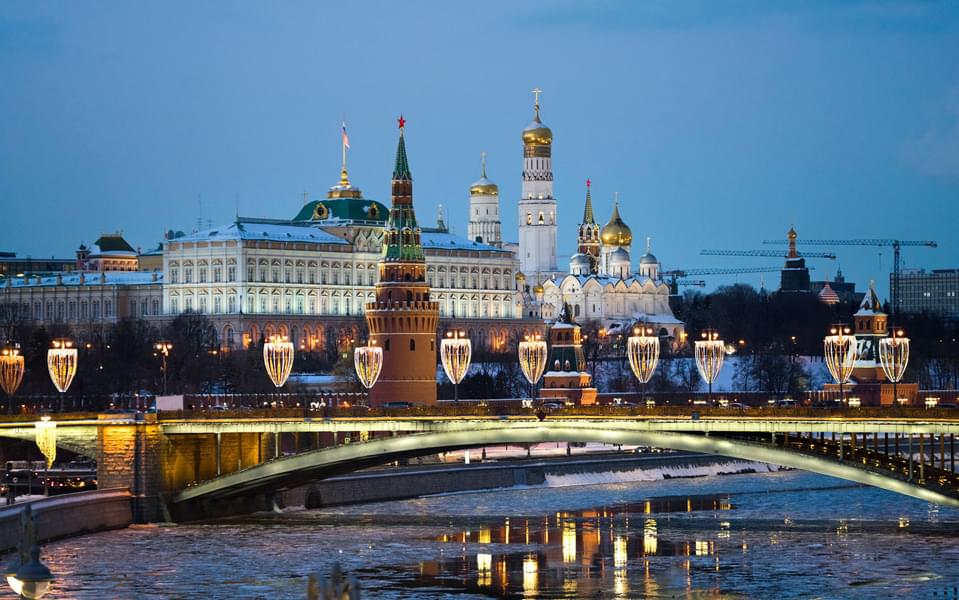
Moscow has terrible traffic, so getting around by car is not a good idea. The metro is one of the best options to get around the city.
Carry your passport with you whenever you're going out. You'll need a passport to buy train tickets, a sim card, and even theatre tickets.
Apply for a visa three months before the tour so that you can be free from any prospective hassles.
Some of the dishes that you must try in Moscow include cake pushkin, borscht, and lepyoshka.
Do not exchange a large amount of money at the airport, as the exchange rates are much higher.
Buy the Moscow City Pass to explore the popular attractions at a budget-friendly rate.
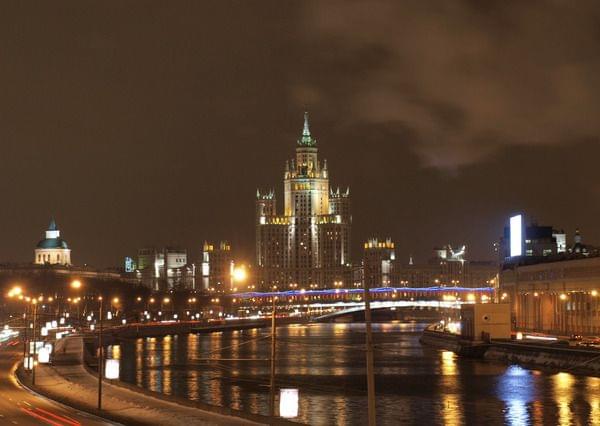
Weather : Moscow experiences a continental climate with cold and chilly winters and hot summers. During summer months, the temperature hovers around 23 degrees Celsius, while in winter, there is plenty of snow, and the temperature is often lower than -10 degrees Celsius.
Language : Russian is the official language of Moscow. English is the second most widely spoken language by the people.
Time Zone : Moscow follows MSK- Moscow Standard Time zone.
Budget : You will spend around ₽4,642 ($77) on your vacation in Moscow daily. On average, you'll spend around ₽1,052 ($17) on meals and ₽453 ($7.51) on transportation daily. The average accommodation rate in the city for a couple is around ₽5,864 ($97). So, a vacation to Moscow for one week for two people will cost around ₽64,987 ($1,078).
Currency : The currency of Moscow is the Ruble.
Visa : If you're a citizen of the EU, Asia, Japan, the USA, or Africa, you'll need to get a visa to enter Moscow. Citizens of Qatar, Israel, Colombia, Costa Rica, and Laos don't need a visa to enter Moscow.
What are the best attractions to see in Moscow?
Saint Basil's Cathedral
Skip the line and get direct entry to Saint Basil's Cathedral with Moscow Pass. Saint Basil's Cathedral is a symbol of Russia, and it houses nine different chapels connected by a winding labyrinth of stairways and corridors. There is a beautiful garden outside the cathedral with bronze monuments.
Red Square is a beautiful square that houses breathtaking attractions like the Kremlin, Lenin's Mausoleum, and St. Basil's Cathedral. It hosts rock concerts, public ceremonies, and Soviet military parades.
With the Moscow attractions tickets, you can get access to the Kremlin, a fortified complex that houses four cathedrals and five palaces. The Kremlin also serves as the residence of the president of Russia.
How many days should I spend in Moscow?
You should spend a minimum of two days in Moscow. On the first day, you can explore iconic attractions like the All-Russian Exhibition Center, Red Square, Moscow Zoo, and the Kremlin. Reserve your second day for the Moscow walking tour and shopping.
What is the best time to visit Moscow?
May and September is the best time to visit Moscow as, during these months, the snow starts to melt and the temperature starts soaring. Many events and festivals are also organized during this time of the year.
How can I get cheap Moscow attraction tickets?
You can buy Moscow Pass to explore the famous attractions at discounted rates.
What is the best way to book Moscow museum tickets?
You can book Moscow museum tickets from trustworthy and reputed online travel sites. Moscow attractions tickets are also the best way to visit the popular museums at reduced rates.

© 2022 mymoscowpass.com All rights reserved.
- International
- Schools directory
- Resources Jobs Schools directory News Search
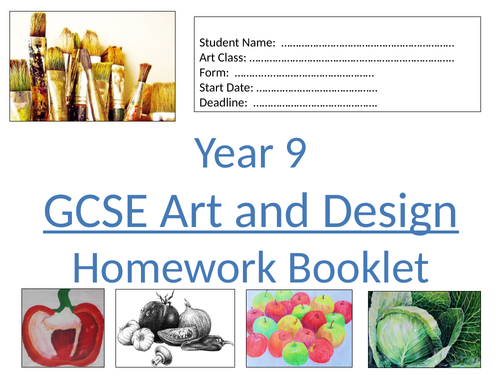
Year 9 Art Homework Booklet: Natural Forms
Subject: Art and design
Age range: 11-14
Resource type: Worksheet/Activity
Last updated
15 August 2018
- Share through email
- Share through twitter
- Share through linkedin
- Share through facebook
- Share through pinterest

A clear and concise homework booklet to aid GCSE Art and DEsign students in independent home study.
Tes paid licence How can I reuse this?
Your rating is required to reflect your happiness.
It's good to leave some feedback.
Something went wrong, please try again later.
Disappointing, not worth £5.50
Empty reply does not make any sense for the end user
Claire_Zanelli
This is a fantastic resource that gives a good starting point for pupils doing a natural form project and helps them to improve and build on their drawing skills.
Report this resource to let us know if it violates our terms and conditions. Our customer service team will review your report and will be in touch.
Not quite what you were looking for? Search by keyword to find the right resource:

IMAGES
VIDEO
COMMENTS
art teacher blue purple Homework 4 Create a colour wheel collage. and scrap paper. If you dont have any ask your Remember the primary and secondary colours come into different shades. LOOK! I do I make a collage…. yellow green Tear up little bits of coloured paper and glue down to create your fish. The smaller the bits of paper the more ...
Year 8: Art & Design - Homework Booklet . Term 1: Impressionism & Post Impressionism . Student Name: ... will be the first page of your homework booklet for the term. Task 2: Key features of Impressionism . Task Homework Complete Impressionism & Still Post-Impressionism 1 . Monet's :
Year 8 Homework Booklet ... Your teacher will refer to the page numbers when setting homework. Each page should take approx. 30-60 minutes. 2 Key Vocabulary for this term Complete the word search below to help introduce you to words you will be hearing in Art this term. If there are any you have not heard before please do research them to help ...
About this booklet. This booklet is your art homework for this year. Treasure it, look after it, but above all else don't lose it!! There's lots interesting activities and information to keep ...
Teaching Packets to Download or Borrow. Teaching packets are designed to permit flexibility in use. All are part of our free loan program with many available for immediate PDF download. They include a printed booklet with in-depth background information, suggestions for student activities, supplemental image CDs, and often with color study ...
Art homework booklets. Subject: Art and design. Age range: 11-14. Resource type: Other. Bexjjones. Last updated. 6 March 2023. ... 879.31 KB pdf, 621.66 KB docx, 7.76 MB docx, 3.49 MB. A range of homework booklets for year 7 - 9 on various themes. easily adaptable. Tes paid licenceHow can I reuse this? Reviews Something went wrong, please try ...
KS3 ART homework booklet no.1. Subject: Art and design. Age range: 11-14. Resource type: Worksheet/Activity. kaymyddleton95. Last updated ... File previews. pdf, 44.73 MB JPG, 19.85 KB JPG, 69.64 KB JPG, 69.4 KB. 7 ART KS3 homework tasks can be printed as worksheets or as a booklet. Tes paid licenceHow can I reuse this? Reviews Something went ...
Your teacher will refer to the page numbers when setting homework. Each page should take approx. 30-60 minutes. 2 ... Van Gogh [s work, try to use your Art vocabulary. Completely fill in this shape with factual ... On the last page of this booklet you are going to draw your landscape again but this time in the style of Vincent Van Gogh. To
Free Printable Art Worksheets. My favorite go-to art lessons come from the Art Appreciation Worksheet Bundle. It's as easy as 1, 2, 3! 1. Pick an artwork. 2. Print one of the Art Appreciation Worksheets. 3. Watch with joy as your students connect with and interpret art.
pdf, 15.5 MB. Set of 12 Art homework sheets for KS3 students. I created these for my Art Department and we set 1 task per term for year 7 & 8 students. This is enough for a whole academic year if you choose to do the same. Each task includes its own set of success criteria and space for students to self-assess.
Y7 Homework Booklet TASK 8 : FINAL PIECE This homework is the most challenging of all - a blank piece of paper! Design and make a piece of work , Use your favourite techniques and art materials. The piece can be about anything related to you! EXTENSION - DESCRIBE and EXPALIN to your teacher SCORE /10 Feedback _____
5.0 (1 review) BBC Children in Need: Pudsey Art Lesson Pack. 4.4 (10 reviews) Cubist Christmas Card Lesson Pack. 4.5 (2 reviews) ks3 art art art ks3 art lesson plans art curriculum scheme of work art tone elements of art art scheme of work ks3 art curriculum. Browse through our KS3 art and design teaching resources to help you spark creativity ...
KS3 Autumn Term Homework Booklets 2023-2024. Name. Year 7 Autumn Term Homework Booklet 2023-2024.pdf. Download. Year 8 Autumn Term Homework Booklet 2023-2024.pdf. Download. Year 9 Autumn Term Homework Booklet 2023-2024.pdf. Download. Showing 1-3 of 3.
First Grade Winter Math Activity Booklet 15 reviews. Explore more than 227 "Homework Booklet" resources for teachers, parents and pupils as well as related resources on "Homework Booklet English". Instant access to inspirational lesson plans, schemes of work, assessment, interactive activities, resource packs, PowerPoints, teaching ideas at Twinkl!
Welcome to the World of Blooket: a new take on trivia and review games! The way it works is that a teacher/host picks a question set and a unique game mode. Then, we generate a code that players can use to join the game on their own devices. After the game starts, players will answer questions to help them win.
It is a 50 page extended version of my Visual Elements booklet. It explores the visual elements, history of art, famous artists and art movements, activities to build skills and knowledge in Art. A great resource for cover lessons, homework tasks, to build on your departments resources or to get lesson ideas from. A4 size digital download.
The Pushkin State Museum of Fine Arts (Russian: Музей изобразительных искусств имени А. С. Пушкина, abbreviated as Russian: ГМИИ) is the largest museum of European art in Moscow. located in Volkhonka street, just opposite the Cathedral of Christ the Saviour.The International musical festival Sviatoslav Richter's December nights has been held in the ...
Introduction. Encyclopædia Britannica, Inc. K. Scholz/H. Armstrong Roberts. The capital and largest city of Russia, Moscow has always played a central role in the country's history. In the Middle Ages it was the capital of the powerful principality of Muscovy. For much of the 20th century it was the capital of the Soviet Union, representing ...
Walking tour around Moscow-City.Thanks for watching!MY GEAR THAT I USEMinimalist Handheld SetupiPhone 11 128GB https://amzn.to/3zfqbboMic for Street https://...
Subject: Art and design. Age range: 14-16. Resource type: Worksheet/Activity. File previews. pub, 33.5 MB. pub, 1.68 MB. variety of tasks. Tes classic free licence. Not quite what you were looking for?
Book your Moscow attraction tickets online and get exclusive discounts. Choose from multiple attractions, and guided tour activities! ... Basmanny is the northwest portion of Moscow dotted with a wide variety of museums and art galleries. It is home to artsy venues and five-star accommodations and hotels. Arbat: It is a trendy neighborhood with ...
docx, 4.45 MB. Art & Design Homework Booklet - KS3. Originally designed for Year 7 but can be easily adapted. 19 pages of activities. Each activity has a L.O. and criteria for success. Differentiation is included in the form of Gold/Silver/Bronze. Assessment is included in the form of self/peer/parent feedback.
Age range: 11-14. Resource type: Worksheet/Activity. File previews. pptx, 3.69 MB. A clear and concise homework booklet to aid GCSE Art and DEsign students in independent home study. Tes paid licence How can I reuse this? to let us know if it violates our terms and conditions. Our customer service team will review your report and will be in touch.